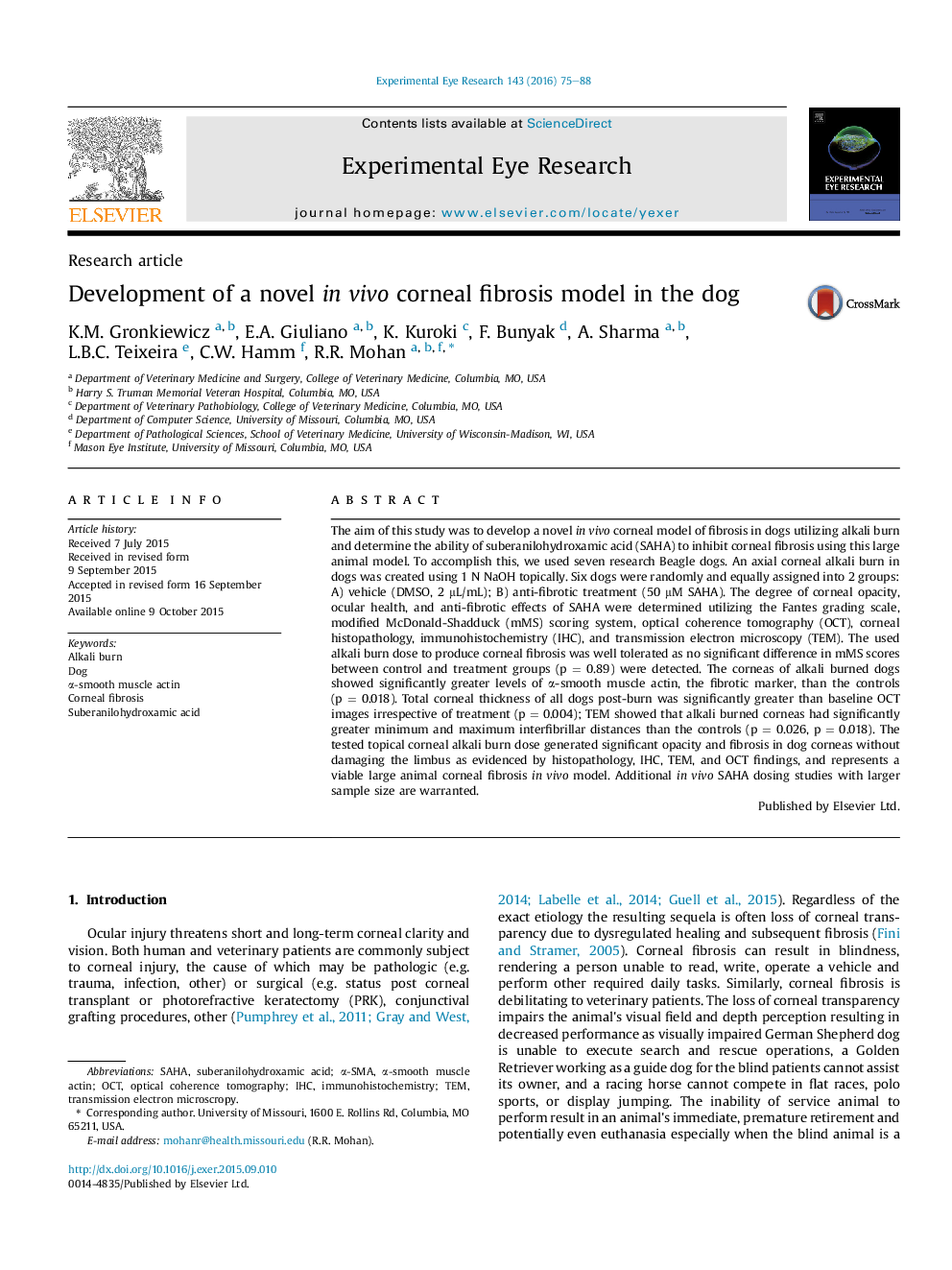| کد مقاله | کد نشریه | سال انتشار | مقاله انگلیسی | نسخه تمام متن |
|---|---|---|---|---|
| 6196422 | 1602579 | 2016 | 14 صفحه PDF | دانلود رایگان |

- The anatomy and physiology of the dog cornea is similar to human.
- The alkali burn protocol successfully created corneal fibrosis in dogs.
- A novel in vivo model of corneal fibrosis was developed in dogs.
- This model is useful for evaluating safety and efficacy of newer therapeutics in large animals.
- SAHA is safe for topical eye application to treat corneal fibrosis in vivo.
The aim of this study was to develop a novel in vivo corneal model of fibrosis in dogs utilizing alkali burn and determine the ability of suberanilohydroxamic acid (SAHA) to inhibit corneal fibrosis using this large animal model. To accomplish this, we used seven research Beagle dogs. An axial corneal alkali burn in dogs was created using 1 N NaOH topically. Six dogs were randomly and equally assigned into 2 groups: A) vehicle (DMSO, 2 μL/mL); B) anti-fibrotic treatment (50 μM SAHA). The degree of corneal opacity, ocular health, and anti-fibrotic effects of SAHA were determined utilizing the Fantes grading scale, modified McDonald-Shadduck (mMS) scoring system, optical coherence tomography (OCT), corneal histopathology, immunohistochemistry (IHC), and transmission electron microscopy (TEM). The used alkali burn dose to produce corneal fibrosis was well tolerated as no significant difference in mMS scores between control and treatment groups (p = 0.89) were detected. The corneas of alkali burned dogs showed significantly greater levels of α-smooth muscle actin, the fibrotic marker, than the controls (p = 0.018). Total corneal thickness of all dogs post-burn was significantly greater than baseline OCT images irrespective of treatment (p = 0.004); TEM showed that alkali burned corneas had significantly greater minimum and maximum interfibrillar distances than the controls (p = 0.026, p = 0.018). The tested topical corneal alkali burn dose generated significant opacity and fibrosis in dog corneas without damaging the limbus as evidenced by histopathology, IHC, TEM, and OCT findings, and represents a viable large animal corneal fibrosis in vivo model. Additional in vivo SAHA dosing studies with larger sample size are warranted.
287
Journal: Experimental Eye Research - Volume 143, February 2016, Pages 75-88